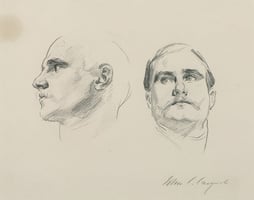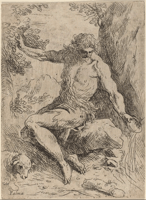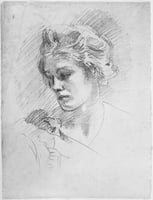1. What is Sight Size Painting? Sight size painting is a technique that can be used by artists to...
Sight size technique
What is sight size technique?
Are you an artist who wants to achieve more realistic drawings? Or an architect who needs to create accurate representations of something? If so, then sight size technique may be for you!
Sight size is a drawing technique where the artist matches the size of the subject with the size of the drawing. This means that the artist draws the subject at the same size that it is in real life. This can be done by using a ruler or other measuring tool to make sure that the drawing is the same size as the subject.
There are many benefits to using sight size technique. It helps the artist to create a more realistic drawing or painting. It also helps to ensure that the drawing or painting is proportionate.
One of the challenges that come with using sight size technique is that it can be difficult to measure the subject accurately. It can also be challenging to maintain the same perspective as the subject.
Overall, sight size technique is a helpful tool for artists, architects, and other professionals who need to create accurate representations of something.
The benefits of sight size technique
Sight size is a drawing technique that has numerous benefits for artists. The most notable of these benefits is the increased accuracy in proportions that it provides. This is because, when using sight size, the artist is aligning their drawing tools with the subject matter. This means that the drawing tool is the same size as the subject, allowing the artist to easily measure and ensure the accuracy of the drawing.
Another benefit of sight size is the greater control it gives the artist over the composition. This is because the artist is able to see the subject matter in its entirety while working. This means that the artist can see the subject from different angles and get a better understanding of it, leading to a more successful composition.
Lastly, sight size is an excellent technique for beginners. This is because it is relatively simple to learn and use. Once the artist has mastered sight size, they can move on to more complex drawing techniques.
Overall, sight size is an extremely beneficial drawing technique that all artists should consider using. It provides accuracy, control, and simplicity, all of which are essential for a successful drawing.
If you're an artist, chances are you're always looking for ways to improve your craft. One of the best ways to do this is by perfecting your technique. And when it comes to technique, few things are more important than accuracy.
How to implement sight size technique
Sight size is a technique that allows you to accurately gauge the size of an object or subject. This is done by positioning yourself at a distance where the object or subject fills up a certain amount of your field of vision. From there, you can then use a measuring device (ruler, tape measure, etc.) to get an accurate measurement.
So why is sight size so important?
Sight size is important because it allows you to see the subject matter in its entirety. This is opposed to other methods where you might only see a part of the subject (usually the part that's closest to you). This can lead to inaccuracies in your measurement, which is why sight size is often considered the best way to go about things.
Now that you know what sight size is and why it's important, let's take a look at how to actually go about using it. When using sight size, there are a few key things to keep in mind:
First, you need to make sure that your subject is well lit. This will help you to see the details more clearly.
Second, you need to find a spot where you can see your subject from a distance. This will help you to get an accurate measurement.
Finally, you need to take your time when measuring. This will ensure that you get an accurate reading.
By following these simple tips, you'll be well on your way to using sight size like a pro!
The results of sight size technique
Are you looking to create drawings that are accurate and realistic? If so, the sight size technique is a great option.
This drawing method involves setting up your subject matter at a distance where you can comfortably see it with your naked eye. Once you have your subject in view, measure it and record the measurement. It's important to be precise when taking measurements.
After recording the measurement, you'll set up your drawing surface at the same distance from your eye as the subject was. So, if the subject was 10 inches away from your eye, you would set up your drawing surface 10 inches away from your eye.
Once your drawing surface is in place, you can begin drawing the subject. Make sure to keep the subject the same size relative to your eye as it was in real life. This will ensure that your drawing is accurate to the real-life subject.
The sight size technique is often used by portrait artists, as it results in very realistic and accurate drawings of people's faces. However, it can be used for any type of subject matter. Give it a try next time you're looking to create a realistic and accurate drawing!
Case studies of sight size technique
One of the great things about the sight size technique is that it leads to less distortion of the subject matter. This is because you're keeping the subject the same size relative to your eye throughout the drawing process. This results in a drawing that is more accurate to the real-life subject.
In addition, the sight size technique allows for more precise measurements. This is because you're measuring the subject directly, rather than trying to estimate the size of the subject based on the paper size. This makes it a great option for those who are looking for a very accurate drawing.
So, if you're looking to create a realistic and accurate drawing, the sight size technique is a great option. Give it a try next time you're looking to create a drawing that is true to life!
FAQ about sight size technique
Sight size is a drawing and painting technique that involves matching the size of the subject with the size of the drawing. This results in a highly accurate and realistic representation of the subject.
Sight size has been used by many famous artists throughout history, including Leonardo da Vinci, Michelangelo, and Rembrandt. There are many examples of sight size technique in both art and architecture. Today, sight size is still used by artists and architects who want to achieve a high level of realism in their work.
So how does sight size work?
The artist uses a viewfinder to keep the subject the same size as they draw it. This allows for very accurate drawings, since the artist can constantly compare the subject to the drawing.
There are many different ways to use sight size, depending on the artist's preference. Some artists use a plumb line to keep the subject in proportion, while others use a T-square. No matter what method you use, sight size is a great way to achieve realistic drawings.
If you're interested in trying sight size for yourself, there are a few things you need to keep in mind. First, you need to have a clear view of your subject. This means that you'll need to set up your easel in a place where you won't be interrupted. Second, you need to be patient! Sight size takes a lot of time and practice to master. But once you get the hang of it, you'll be able to create amazing works of art.
If you're an artist who is looking for a way to create accurate drawings, you might want to consider using the sight size technique. This drawing technique, also known as the measure for measure technique, involves measuring the subject with your own sight, rather than relying on a ruler or other measuring device.
There are several benefits to using sight size technique. First, it helps to ensure that the drawing is accurate. This is because you are using your own sight to measure the subject, rather than relying on an estimation. Second, it can be used to create a sense of depth and perspective in the drawing. This is because you are viewing the subject from a distance, which can help you to create a sense of depth in the drawing. Third, it can help the artist to see the drawing from the viewer's perspective, which can be helpful when making decisions about composition.
Despite the many benefits of sight size technique, there are a few potential drawbacks to be aware of. First, it can be time-consuming to set up the sighting process. This is because you need to take the time to sight the subject from a distance and then transfer those proportions to the drawing surface. Second, it can be difficult to maintain the same sighting distance throughout the drawing process. This is because it can be easy to get too close to the subject, which can throw off the accuracy of the drawing. Third, it can be easy to lose sight of the overall proportions of the drawing if the artist gets too focused on the details. This is because it can be easy to get caught up in the details of the drawing and lose sight of the bigger picture.
Overall, sight size technique is a great way to create accurate drawings. However, it's important to be aware of the potential drawbacks before you start using this technique.
The history of sight size technique
Sight size is a tried and true method used by artists to create accurate drawings and paintings. The technique involves sighting the subject from a distance and then drawing it to scale on the paper or canvas. This allows the artist to take into account the perspective of the viewer, and create a more realistic representation of the subject.
Sight size has been used for centuries, and was popularized in the 19th century by artists such as John Singer Sargent. Today, the technique is still used by many artists all over the world.
There are a few things to keep in mind when using sight size technique. First, it is important to maintain a consistent distance from the subject. Second, the drawing or painting must be done to scale, so that the finished piece is the same size as the subject. And finally, it is helpful to use a plumb line or other reference point to help keep the drawing or painting in proportion.
With a little practice, anyone can learn to use sight size technique to create beautiful, realistic drawings and paintings.



